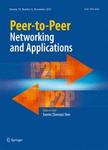版权所有:内蒙古大学图书馆 技术提供:维普资讯• 智图
内蒙古自治区呼和浩特市赛罕区大学西街235号 邮编: 010021

作者机构:Guizhou Univ Sch Elect Engn Guiyang 550025 Peoples R China South China Univ Technol Sch Comp Sci & Engn Guangzhou 510006 Peoples R China
出 版 物:《PEER-TO-PEER NETWORKING AND APPLICATIONS》 (Peer-to-Peer Netw. Appl.)
年 卷 期:2025年第18卷第2期
页 面:1-25页
核心收录:
学科分类:0810[工学-信息与通信工程] 08[工学] 0812[工学-计算机科学与技术(可授工学、理学学位)]
基 金:National Natural Science Foundation of China [62341303, 52265066, 62203132] National Natural Science Foundation of China [ZKYiban103] Guizhou Provincial Science and Technology Projects
主 题:Wireless sensor network Coverage optimization Hybrid algorithm Beluga whale optimization Butterfly optimization algorithm Dynamic parameter adaptation strategy
摘 要:Wireless sensor networks (WSNs) play a crucial role in the development of emerging technologies, but they face significant challenges in practical applications, particularly concerning the coverage problem. Effective coverage of sensor nodes is essential for ensuring high-quality service in WSNs. However, existing swarm intelligence algorithms for coverage optimization in WSNs often exhibit poor performance and suffer from simplistic experimental setups and low coverage rates. To address these challenges, this study proposes the hybrid butterfly-beluga optimization algorithm with a dynamic quadratic parameter adaptation strategy (NHBBWO) for optimizing WSNs coverage. NHBBWO combines the strengths of beluga whale optimization (BWO), known for rapid convergence, and butterfly optimization (BOA), which excels in global search but struggles with slow convergence and local optima. By hybridizing BWO and BOA, the hybrid butterfly-beluga whale optimization (HBBWO) algorithm improves both convergence accuracy and speed, as well as the ability to avoid local optima. Additionally, a dynamic parameter adaptation strategy using a quadratic function further enhances the exploration capability of HBBWO. The performance of NHBBWO is rigorously evaluated through statistical analyses, including the Friedman rank test and Wilcoxon rank-sum test, applied to twenty-three benchmark functions. The results confirm the superiority of NHBBWO. Finally, simulations in 2D coverage scenarios demonstrate that NHBBWO significantly improves node coverage and reduces redundancy compared to four state-of-the-art swarm intelligence algorithms. This advancement addresses critical limitations in current methodologies and contributes to the broader field of WSN optimization by providing a robust solution to the coverage challenge.